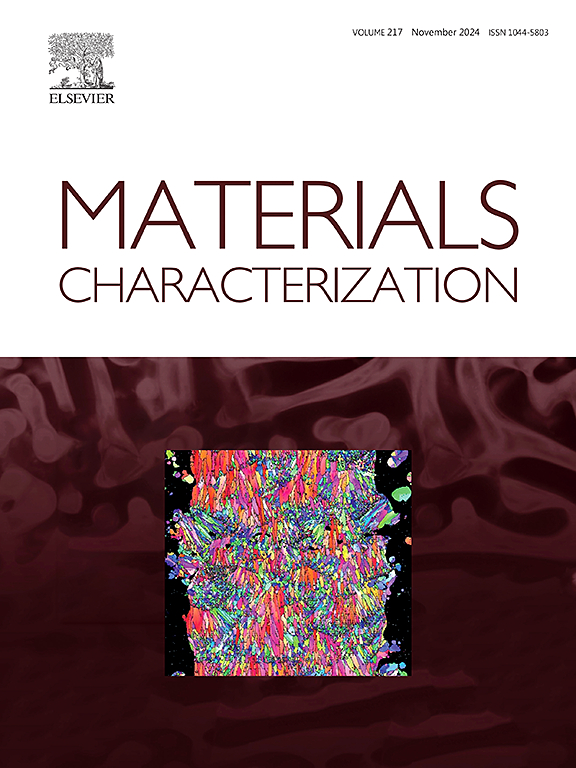Deformation field and texture analysis in friction-assisted lateral extrusion of aluminum
IF 4.8
2区 材料科学
Q1 MATERIALS SCIENCE, CHARACTERIZATION & TESTING
引用次数: 0
Abstract
A new flow line model was developed based on experimental observations to describe the deformation field and texture evolution in a novel severe plastic deformation (SPD) technique, named the Friction-Assisted Lateral Extrusion Process (FALEP). FALEP produces a sheet from bulk metal in one step. The microstructure and crystallographic texture of Al-1050 material after FALEP deformation were investigated by EBSD and XRD after an extrusion ratio of 10.5. Heterogeneity in the microstructure and texture was observed within the thickness of the sheet with average grain sizes of 720 nm and 4.2 μm near the top of the obtained sheet and the bottom, respectively. Flow lines were ascribed within split-samples before testing. They revealed large deviations from the expected simple shear model; three-stage deformation paths were observed. They consisted of two simple shear stages and a new linear convergent extrusion (‘LCE’) type of flow between them. An analytical flow line model was constructed for obtaining the deformation field for the LCE part of the flow. Texture simulations were carried out using the viscoplastic Taylor and the viscoplastic self-consistent models. The classical simple shear model was not able to properly reproduce the experimental textures. However, the new flow line model accurately described the texture evolution both at the top and bottom regions of the sheet. The obtained total strains were more than twice less than the one expected from the classical uniform simple shear deformation model.

求助全文
约1分钟内获得全文
求助全文
来源期刊

Materials Characterization
工程技术-材料科学:表征与测试
CiteScore
7.60
自引率
8.50%
发文量
746
审稿时长
36 days
期刊介绍:
Materials Characterization features original articles and state-of-the-art reviews on theoretical and practical aspects of the structure and behaviour of materials.
The Journal focuses on all characterization techniques, including all forms of microscopy (light, electron, acoustic, etc.,) and analysis (especially microanalysis and surface analytical techniques). Developments in both this wide range of techniques and their application to the quantification of the microstructure of materials are essential facets of the Journal.
The Journal provides the Materials Scientist/Engineer with up-to-date information on many types of materials with an underlying theme of explaining the behavior of materials using novel approaches. Materials covered by the journal include:
Metals & Alloys
Ceramics
Nanomaterials
Biomedical materials
Optical materials
Composites
Natural Materials.
 求助内容:
求助内容: 应助结果提醒方式:
应助结果提醒方式:


